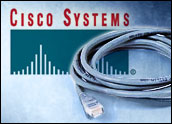
SBC Communications, one of the telecom industry’s landline leaders, announced Tuesday its plans to roll out “FreedomLink” WiFi hotspot service at UPS Store locations throughout the United States. The announcement is the latest stage in the company’s overall FreedomLink strategy, which promises to bring mobile connectivity to a mass audience.
The move also positions UPS Stores (formerly Mail Boxes Etc.) as value-added destinations where customers can access the types of services they need to conduct business and complete tasks. It also puts UPS Stores in closer competition with FedEx’s Kinko’s chain, which already offers T-Mobile hotspots in many of its stores.
SBC said its FreedomLink service is expected to be available in at least 1,500 UPS Stores by the end of 2004, with installations set to continue into 2005. SBC predicts its total U.S. hotspot network will reach 5,000 store locations by 2007.
Their Game To Lose
“The agreement is a giant step forward in our efforts to make FreedomLink service widely available to our customers,” Ray Wilkins, president of SBC sales and marketing, said. “Our strategy is to aggressively deploy it in various types of venues to enable our customers to enjoy a comparable broadband experience in the home, at the office, and on the road.”
Keith Waryas, research manager for wireless programs at IDC, said the WiFi space is the RBOCs’ (Regional Bell Operating Companies’) game to lose.
“Generally, when you look at the situation from a 30,000-foot perspective, SBC can improve the reach of their DSL services through added mobility with WiFi,” Waryas told the E-Commerce Times. “SBC has a pretty good footprint, has its customers and is looking to sell more stuff [to combat its] eroding base, which brings WiFi into play.”
The Better Strategy
Through its partnership with UPS and Wayport, SBC is deploying FreedomLink in multiple cities. Waryas believes this strategy is a better one than Verizon’s attempt to turn New York City into a hotspot paradise.
“Verizon had the correct concept in offering greater value to their DSL subscribers, but there were fundamental problems from a practical perspective,” he said. “I can’t see someone sitting on Third Avenue with a PC trying to connect.”
Instead, he noted, SBC is going where its customers go. SBC customers who pay for hotspot service in Raleigh, North Carolina, for example, gain access to the company’s entire network, whether in an airport lounge in Seattle or a UPS Store in Los Angeles.
“Your own customers are the ones you [most] want at least to start out with, because you hope to capture incremental business. You want to weave these services more into their everyday lives. It’s a classic model,” Waryas said. “This strategy tends towards incremental value versus [the idea that] WiFi hotspots are the be-all and end-all. When you’re a stand-alone provider, you’re more prone to displacement.”
Way(to Go!)port
Waryas went on to say SBC’s decision to partner with Wayport is a “hands-down good idea” because of Wayport’s presence in hotels, airports and other places where business is conducted.
According to Waryas, Wayport has the third largest number of hotspot sites in U.S. markets. As a result, it provides a good footprint to help SBC integrate and fill out its own service offering by providing more up-to-date service and making that service more available to customers than if SBC had launched such services without assistance.
SBC’s and Wayport’s WiFi offerings should appeal particularly to small and medium businesses (SMBs) that tend to get squeezed in the crush to sign up more enterprise and consumer business.
“[SMBs] offer the opportunity for any business connectivity technology,” Waryas said. “These businesses generally have limited resources and are underserved. Throwing in mobility is a big selling point for them.”














































Social Media
See all Social Media